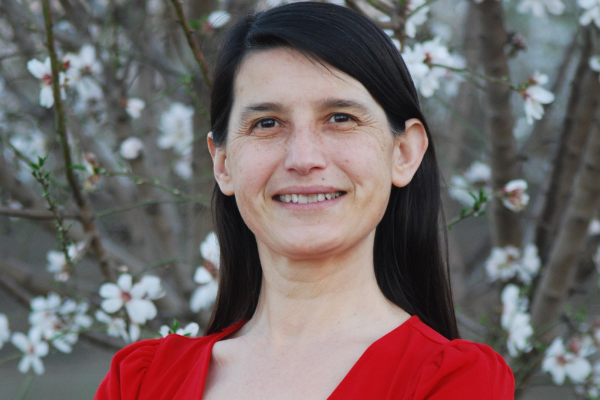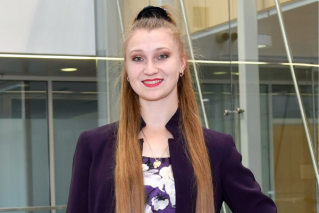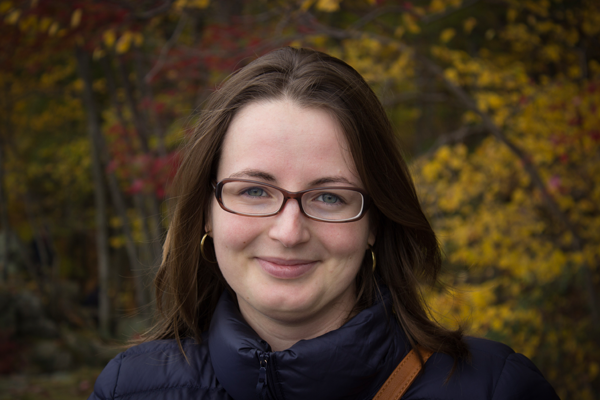
Dr. Fatma Kaplan is the CEO/CSO of Pheronym with a background in both biology and chemistry. She has a PhD in Plant Molecular and Cellular Biology where she identified the role of beta-amylase and maltose during cold and heat shock. As a post-doc, Dr. Kaplan trained in Natural Product Chemistry with a focus on isolating biologically active compounds. She discovered the first Caenorhabditis elegans sex pheromone and published in Nature in 2008. Then she found that pheromones regulate other behaviors in both parasitic and beneficial nematodes. Dr. Kaplan conducted the first agricultural biocontrol experiment in Space at the International Space Station in 2020. She has very high impact publications and her dissertation was cited in textbooks within 5 years of publication. She worked as a scientist at NASA, the National High Magnetic Field Laboratory, and the US Department of Agriculture – Agricultural Research Service. Dr. Kaplan co-founded Pheronym to bring nematode pheromone technology to the market.
Without pest control, farmers can lose 30-70% of their crop. Historically, pheromone products are applied through the air to control crop-destroying insects above ground. (Pheromones are biochemicals used by insects and other animals to communicate with each other. Insects send these biochemical signals to help attract mates, warn others of predators, or find food.) Pheronym, an ag-biotech startup based in Davis, CA, takes this concept down into the soil using pheromones from nematodes (microscopic roundworms) to control agricultural pests.
Pheronym’s first product, still in prototype, improves the efficacy of beneficial nematodes up to 78% and is “bee-friendly.” The company’s second product protects young and vulnerable plants from crop-destroying plant-parasitic nematodes. The company’s approach to pest control helps farmers grow more food in a more sustainable way, explains CEO/CSO Dr. Fatma Kaplan.
For years, pesticides were applied to the ground from above. What sparked the idea to take the battle underground and employ pheromones?
Underground pests are not as readily visible as the ones above ground. They are out of sight, out of mind. But farmers know about them because they reduce the yield. I am aware of them because I grew up on a family farm and have a degree in agriculture. I am also very familiar with the benefits of pest control.
I got the idea in 2005 when I accepted a postdoctoral position to identify the model nematode’s (Caenorhabditis elegans) sex pheromone and discovered that nematode pheromones were water-soluble. I knew how these discoveries could revolutionize agricultural pest control for nematodes. Pheromones have been used to control insects successfully for decades. Why not for nematodes? Since nematode pheromones were water-soluble, we could apply them with irrigation water to the soil where plant-parasitic nematodes attack plant roots.
Soon after we published the C. elegans work in Nature (2008), the USDA-ARS recruited me to apply this discovery to control agriculturally important nematodes, particularly root-knot nematode, a global problem for all crops. Furthermore, my vision of using pheromones to control parasitic nematodes won the Schroth Faces of the Future, Nematology Award by the American Phytopathological Society in 2011.
At the USDA, I learned that not all nematodes were bad, there were good nematodes, just like there is good gut bacteria. These good nematodes were called beneficial nematodes and used commercially to control insects in the soil.
I then found that the beneficial nematodes had an efficacy problem. Potential ways to improve efficacy were to improve dispersal or infectivity. I thought that maybe pheromones could be used to improve the dispersal of the beneficial nematodes to improve their efficacy. In 2012, I showed that beneficial nematode dispersal was stimulated by pheromones. Another application to control underground pests.
With both an ag and business background, what’s been the most challenging for you, personally, in being CEO of Pheronym?
Having an ag and business background is not enough to be a CEO of Pheronym. Pheronym is a startup developing products that require both time and money. It is like a child and needs a lot of time and money to grow and be productive. As Pheronym is growing, its needs change every day. I get into new territory every day and I have to constantly learn new skills really fast to ensure Pheronym’s successful product development and growth.
In terms of team members, what’s the right fit for Pheronym? Ag backgrounds? Or science?
As Pheronym is growing, its needs constantly change. Therefore, we need members with diverse backgrounds including ag, science, sales, marketing, business development, accounting, etc. It also takes a different kind of personality to work in a startup. You have to be OK being in new and unfamiliar territories and willing to learn and adapt fast.
Who are your mentors and how have they provided value?
I learned very early on that you can never have enough mentors. Therefore, I utilized all of the mentorship programs that were available to me, such as the Fellows of All-Star Team (FAST) Advisory Program by California Life Sciences Institute (CLSI), Tech Futures Group (TFG) Business Advisory Program, and the IndieBio Accelerator Program Mentors. Below are Pheronym’s two formal advisors and how they help us.
Our first formal advisor is Dr. Pam Marrone, founder of Marrone Bio Innovations. At the FAST advisory program between September and December 2017, I really enjoyed working with Pam and liked her mentoring style, which is kind, nurturing and generous. When I asked Pam to be Pheronym’s mentor and she said yes, I was thrilled. It’s not every day a pioneer in a biopesticide market says “yes” to me. Pam provided value to Pheronym in more ways than I ever imagined. She is an industry expert with a deep knowledge of how biologicals work in the field. She knows how to successfully develop biopesticide products and enter the market.
At the same time, she has experience building multiple companies from scratch with successful exits; AgraQuest was acquired by Bayer Crop Sciences for nearly $500 million and Marrone Bio Innovations was listed on NASDAQ in 2013, the only pure play listed biopesticide company. Furthermore, very few CEOs have the experience to successfully navigate their companies through economic downturns, and even fewer have run a startup.
Our second formal advisor is Mr. Neil Cohen for marketing. I met Neil at the IndieBio accelerator where he provided specific advice on how to effectively use social media to Pheronym’s advantage. I learned very fast that “the best ideas don’t always win, but the best marketing does”. Marketing in earnest is not just about social media and can be very expensive for a startup. Having an advisor like Neil allowed us to strategically market our company with no budget.
The first thing he did with us was to develop a strategy to be consistent with our messaging. Then we planned when we should get our message out. As you are guessing the timing is very important. After that, we determined the appropriate platform for the message: a press release, social media, or a newsletter or all together. We learned to synergize the different platforms and much more. When Neil agreed to be our advisor, he did not want money. He was OK with equity which everybody knows a big risk, but he believed in us as founders.
Can you expand on the importance of your collaboration with the U.S. National Laboratory to conduct agriculture bio-control experiments in space?
The collaboration with the International Space Station (ISS) U.S. National Laboratory (NL) was critical to conduct the agriculture bio-control experiment in space. Conducting an experiment outside the earth’s boundaries was quite complicated and expensive. This experiment required extreme planning with multiple backup plans, coordination and working with other 6 teams: USDA-ARS, ISS US NL, NASA, NanoRacks, SpaceX and Space Station Processing Facility at Kenney Space Center.
Furthermore, ISS NL provided funding and helped us recruit an implementation partner, NanoRacks, which guided us through safety certification and coordinated with NASA and SpaceX to get our experiment to the ISS US NL. It was an exciting experiment with successful results that we published in npj Microgravity.
What future markets do you see for your products in terms of indoor agriculture and space agriculture?
Indoor agriculture is very “hot” right now with more than $1 billion of investment going to companies building indoor farms to grow leafy greens close to consumers and supermarkets. We definitely see a future for our products in indoor agriculture because the use of pheromone and beneficial organisms already exist in greenhouses that have been used for years to grow vegetable transplants, ornamentals and more recently cannabis.
Indoor and space agriculture are a lot more tightly connected than we imagine. Indoor agriculture is done in a controlled environment, similar to where we will be doing agriculture in space (the Moon, Mars, beyond) when we colonize them. We can easily consider “indoor agriculture is space agriculture for earth”. Space agriculture, the frontier! We think the first pest control products in space will be pheromones and biological control agents. In space, we have a limited air supply, and we can’t release toxic chemicals into it. You can’t exactly open a window to get clean air on a spaceship.
You may be thinking “Why should we have any pest in space?”. Once we have routine trips to space, the pests will come with us to space. Despite so many precautions to keep invasive species/pests outside of our borders, we have very little success keeping them out of our borders on Earth. We believe that no matter how careful we are, pests will come with us to space. Our first line of defense will be biologicals and pheromones to control them.
Other future markets on earth?
Nematode pheromones will unlock the power of pheromones in the row crop market. We can immediately see two applications. One application is a seed treatment to control plant-parasitic nematodes. The second is to control insect pests with beneficial nematodes. There are studies already showing beneficial nematodes can control corn rootworm, which is becoming resistant to corn engineered with Bt proteins. We can combine NemastimTM with beneficial nematodes to control corn rootworms even better.
What advice would you share with young scientists hoping to enter the ag-biotech field? How about investors?
Startups are like children. They say, “It takes a village to raise a child”. The same is true for startups. It takes the whole business ecosystem to make a startup succeed; incubators, accelerators, marketing, law firms, advisory/mentorship programs, and more. So, you can never have enough mentors. I am also going to emphasize Christina Boville’s advice in the previous ACS Industry Matters -Innovation Zone Feature: Surround yourself with supportive people who believe in you, your mission and will help you succeed.
The opinions expressed in this article are the author's own and do not necessarily reflect the view of their employer or the American Chemical Society.
Copyright 2021 American Chemical Society (All Rights Reserved)











